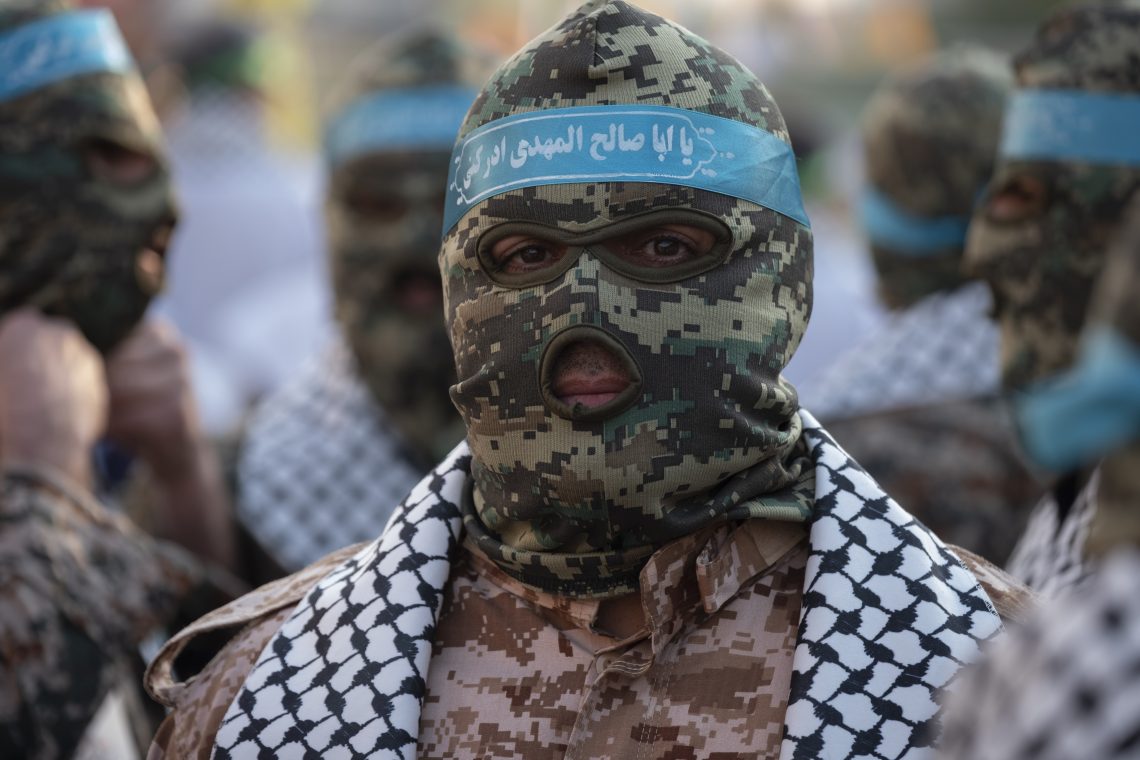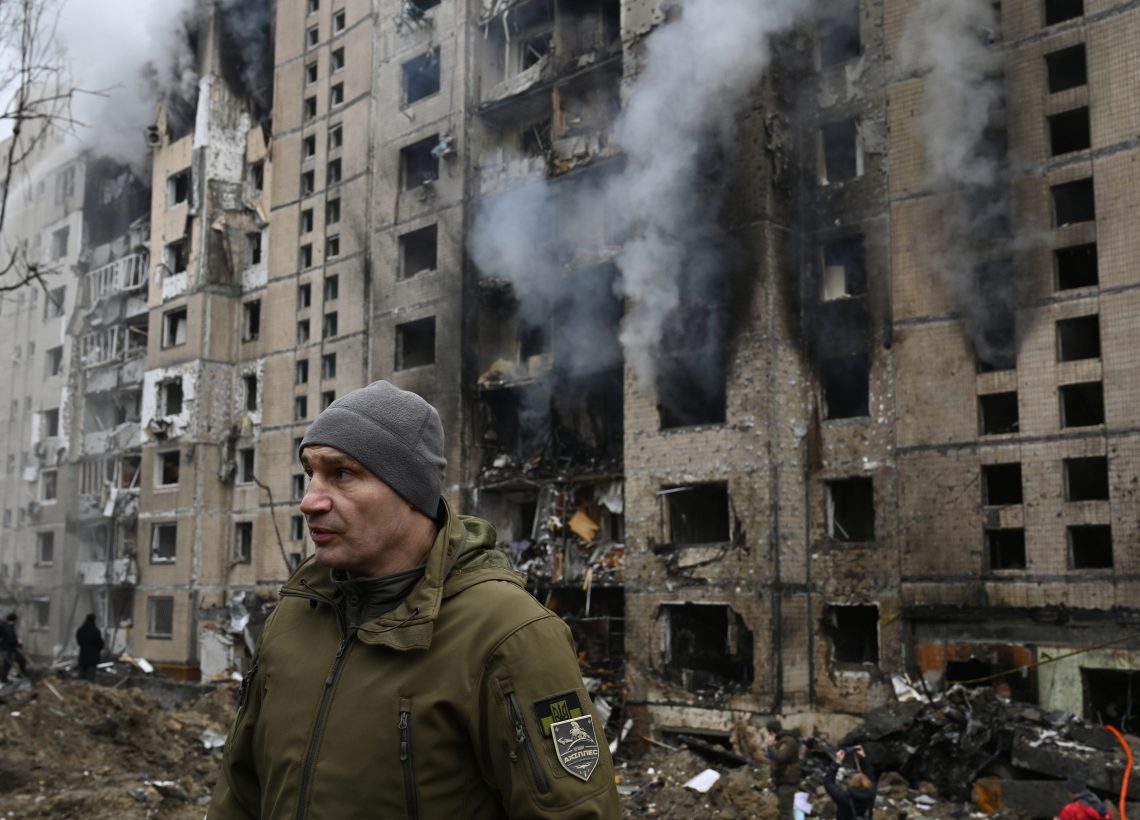Instability 2024: Hotspots and flash points to watch
Wars in Eastern Europe and the Middle East will persist, the the Korean Peninsula and Taiwan Strait will remain hotspots. Stay vigilant for new crises.

In a nutshell
- Global geopolitical risk will remain elevated
- Ongoing wars are likely to continue and new crises are possible
- The threat of international terrorism will presumably increase
The adage attributed to former United States Secretary of State Dean Acheson (1949-1953) is probably the most relevant for any period of history, including the current one: “Foreign policy: it is just one damned thing after another.”
Indeed, challenges existing, expected and unknown will continue casting long shadows on the international landscape, threatening stability, peace and prosperity while vexing the globe’s policymakers throughout 2024.
With Danish physicist Niels Bohr’s (1885-1962) admonition that “Prediction is very difficult, especially if it is about the future” in mind, let us take a quick look at some of the hotspots and flash points that will likely be strategic features of this new year.
Russia-Ukraine
The latest kinetic phase of the large-scale war is nearly two years old, while Russia’s initial invasion happened nearly a decade ago, with the military takeover of Crimea and the instigation of fighting in the eastern Donbas region. Despite the humanitarian, military, economic, political and diplomatic costs, Moscow shows no signs of ending its war.
Ukraine and its president, Volodymyr Zelenskiy, want the return of the country’s internationally recognized territory, including the Donbas region, Crimea and additional areas seized following the 2022 full-scale Russian invasion – some 17 percent of Ukraine’s land.
Moscow’s geopolitical appetite for Ukrainian land could quickly grow again.
Russian President Vladimir Putin’s goal of conquering Ukraine in its entirety has likely been put on hold due to early military failures. However, the “land bridge” created between Russian territory and Crimea along Ukraine’s southeastern coast likely stands as a reasonably satisfying step toward Moscow’s ultimate goal of subjugating Ukraine.
In 2024, with Kyiv seeking to reclaim lost territory, Moscow will likely play defensive games in the regions it currently holds. Defensive strategies typically require fewer forces and weaponry compared to offensive maneuvers. The conflict could become frozen along current lines of control, especially with Iran and North Korea delivering war materiel to Russia. But Moscow’s geopolitical appetite for Ukrainian land could quickly grow again with the failure of Kyiv to maintain critical international diplomatic, economic and military support or successfully press another offensive.

The conflicting goals make substantive peace talks and any agreement to end the conflict remote. Moscow may move to annex more Ukrainian territory and hold sham elections to try to legitimize its claims. The use of a Russian tactical nuclear weapon in Ukraine to break a stalemate, while unlikely, is not out of the question.
Iran’s nuclear program
Iran, already having an outsized impact on international politics with its support of foreign terrorist groups, belligerence and military adventurism in the Middle East and support to Russia in the Ukraine war, stands to continue rocking boats.
One big concern for analysts and policymakers is the course of its nuclear program, especially its possible military dimension. Tehran has been pursuing, overtly and covertly, a nuclear program for decades. While Iran claims its atomic enterprise is entirely for peaceful, civilian electricity generation purposes, significant evidence points to a nuclear program with military applications.
The worry extends to Iran’s prodigious ballistic missile program, the largest in the region. It enables Tehran to project power and provides deterrence and a delivery system for nuclear weapons. Iran’s space program is likely a ruse to hide the development of military intercontinental ballistic missiles that will extend its force’s effective range beyond the Middle East.
With the collapse of the 2015 Joint Comprehensive Plan of Action, which placed limits on Iran’s nuclear program, Tehran continues to enrich and stockpile uranium that it could use to build atomic warheads rapidly. In 2024, absent an agreement to limit or end Iran’s nuclear program (it seems unlikely after nearly three years of vain diplomatic efforts), Tehran will continue to expand its nuclear know-how and enrich uranium ever closer to weapons-grade level (above 90 percent of U-235).
Watch for foreign assistance and advanced weapons transfers from Russia and North Korea to accelerate Iranian nuclear, ballistic missile or space programs to bolster Tehran’s military buildup.
The recent growth in China’s economic, political and military might has raised the specter of a cross-strait war.
Iranian provocations, especially in the Persian Gulf and other waterways, have the potential to escalate into a crisis. Also, Tehran may widen the Israel-Hamas war – through actions of its own or, more likely, those of terrorist proxies, such as Lebanon’s Hezbollah.
Evidence of Iran’s progress in developing an operational nuclear weapon would cause an international dilemma and further destabilize the region. Beyond emergency diplomacy, a response could include Israeli or American military action against Iran. That would result in long-lasting, wide-ranging reverberations.
The Taiwan Strait
Separated by a mere 110 miles of water, the tense relationship between China and Taiwan, which Beijing claims as its sovereign territory, is on the minds of strategists and policymakers from Tokyo in the East to Washington in the West.
While the issue of Taiwan’s political future has simmered for decades going back to the end of World War II, the recent growth in China’s economic, political and military might has raised the specter of a cross-strait war with stakes for regional peace and stability.
A “reunification” with Taiwan would give Beijing a strategic positional advantage in the Western Pacific by intersecting Japan’s transportation lines and undermining U.S. posture in East Asia. Also, it would provide a propaganda victory for the Chinese Communist Party (CCP) and elevate Chinese President Xi Jinping’s legacy alongside those of celebrated leaders Mao Zedong and Deng Xiaoping, which has reportedly become his ambition.
Read more on global challenges
Genocide and the fight for humanity
Is multi-alignment a path to chaos or order?
Geopolitical upheavals divide Southeast Asia
Taiwan, under President Tsai Ing-wen, is a vibrant democracy with a strong market economy and a global edge in the chip-making industry. It has developed a unique domestic and international identity separate from the Chinese mainland. While modern, Taiwan’s military is seriously outgunned and outmanned by the Chinese.
Without U.S. diplomatic and military support as stipulated in the 1979 Taiwan Relations Act, U.S. legislation that calls for a peaceful resolution to Taiwan’s political future, Taipei’s ability to defend the island is questionable.
In 2024, China’s coercive diplomacy to isolate Taiwan and bring Taipei under its control will continue, especially if the U.S. is strategically distracted by the fighting in Eastern Europe and the Middle East – or elsewhere.
While China has qualms about a costly fight for Taiwan that might involve its rival, the U.S. and, possibly, Japan, a cross-strait military assault to burnish President Xi’s legacy and that of the CCP is not out of the question. However, a military misadventure against Taiwan would be disastrous for President Xi and the CCP, even in the tightly controlled Chinese society. That mitigates the risk of an unprovoked assault on Taiwan. Beijing prefers acquiescence, but with the air and seas around the island teeming with Chinese craft on provocative military missions, an abrupt crisis is feasible.
The Korean Peninsula
North Korea’s top priority is the survival of its dynastic regime. Currently run by Kim Jong-un, the grandson of the country’s Stalinist founder and creator of the Korean Workers’ Party Kim Il-sung (in power from 1948 to 1994), the regime’s ultimate goal has been to bring neighboring South Korea, led by President Yoon Suk-yeol, under its control. That raises the possibility of another war on the peninsula.
Look for military developments from Pyongyang, especially resulting from its current military support to Russia.
Pyongyang devotes a significant amount of government resources to its military, including the development of a nuclear arsenal and ballistic missiles with various capabilities, including intercontinental range.
The nuclear weapons serve to deter South Korea and the U.S., threaten Japan, raise North Korea’s international profile and increase its diplomatic heft in the shadow of neighboring superpowers, Russia and China.
While North Korea understands that starting a war with South Korea (and its ally, the U.S.) would amount to self-inflicted regicide for the Kim clan, its brinkmanship makes a crisis possible, unsettling the region, home to some of the world’s largest economies and militaries.
In 2024, Pyongyang will continue to exercise nuclear-missile diplomacy, rattling sabers of Armageddon for a whole set of reasons. It wants to unsettle the domestic politics of South Korea and historic foe Japan, show its independence from China – the influential neighbor, political protector and economic backer – and propagandize to its impoverished, deeply repressed people. Aside from that, the military blackmail serves to extort concessions and aid from friends and foes alike.
Look for military developments from Pyongyang, especially resulting from its current military support to Russia. Moscow may opt to sell the North Koreans its advanced weapons or share technological expertise. Areas to watch include the North’s space program, including satellites, submarine building and submarine-launched ballistic missile programs, which could give the regime a seaborne nuclear deterrent force.
Scenarios
International terrorism
After two decades of terrorism making headlines, one may be reluctant to contemplate the possibility of further violent extremism. Just as we aspire to move beyond the aftermath of the Covid-19 pandemic, we hope to have left behind the era of terrorist organizations like the Islamic State and al-Qaeda.
Truthfully, the news is mixed. While the threat to Western interests has diminished in recent years, the embers of international terrorism still smolder in various parts of the world. Islamic State, though less capable, continues to be a challenge in Syria and Iraq. The Taliban governs Afghanistan while engaging in conflict with an Islamic State affiliate for control of the country. And groups like al-Shabaab pose threats to peace and stability in Africa.
In 2024, expect Iran to persist as the foremost state sponsor of terrorism, providing funding and support to its own Islamic Revolutionary Guard Corps and entities abroad such as Hezbollah, Hamas, Palestinian Islamic Jihad and the Houthi rebels in Yemen. The ongoing bloodshed between Israel and Hamas will continue, with the potential to fuel extremist violence beyond the region even after the direct hostilities in Gaza eventually cease.
The threat of international terrorism will remain. Extremists are not going to cease their attempts to destabilize governments, interrupt peace efforts, highlight incendiary causes, recruit foot soldiers and secure safe havens from which to plan, train and command violent operations.
Wild cards
Like every year, 2024 could also bring a “black swan” event that no one will see coming. Many would agree that the coronavirus pandemic, which had an almost immeasurable effect on the world, was one such event.
Issues that may come to the fore include hostilities between nuclear rivals India and Pakistan; another India-China border crisis in the Himalayas; the malevolent use of artificial intelligence or launching significant cyberattacks to create hostilities and humanitarian or climate-related catastrophes leading to large-scale migrations.
Clearly, ongoing and possible new threats will have wide-ranging effects on peace, security and prosperity. The American writer Mark Twain once warned that “History does not repeat itself, but it often rhymes.” This may prove a fitting motto, indeed, for the year 2024.
For industry-specific scenarios and bespoke geopolitical intelligence, contact us and we will provide you with more information about our advisory services.












